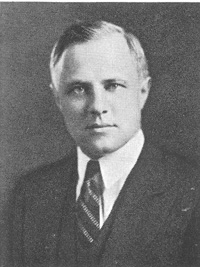Karl Taylor Compton was an American physicist and the brother of Nobel Prize winner Arthur Compton.
Compton was born in 1887 in Wooster, Ohio. He received a B.A. in philosophy and an M.S. from the College of Wooster. He later received the Porter Ogden Jacobus Fellowship to study at Princeton University, where he would earn a Ph.D. in physics. At Princeton, Compton researched the effect of ultraviolet light on electrons alongside O.W. Richardson, who would go on to win the Nobel Prize in Physics.
Compton went on to teach physics at Reed College and at Princeton University. During World War I, he served as a scientific attaché at the American Embassy in Paris. In 1930, Compton became the president of the Massachusetts Institute of Technology.
During World War II, Compton served in a number of different administrative and scientific roles. He first became the head of Division D of the National Defense Research Committee in 1940, focusing on detection methods including radar, fire control, and heat radiation. He would soon become the head of research regarding radar, missiles, and their countermeasures in the Office of Scientific Research and Development (OSRD). During his time with the OSRD, Compton would also head the Office of Field Services and serve as a scientific advisor to General Douglas MacArthur.
In 1945, Compton was appointed a member of the Interim Committee, which would recommend military use of the atomic bomb against Japan. He was also part of the scientific intelligence mission in Japan following the bombings of Hiroshima and Nagasaki. For his work during the war, Compton received the Medal for Merit and the Marcelles Hartley Medal.
Compton died on June 22, 1954, in New York City.





